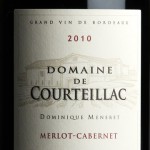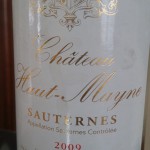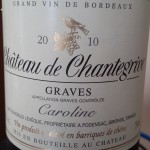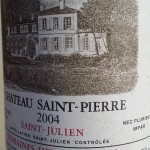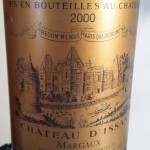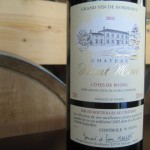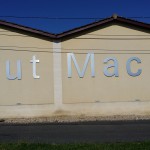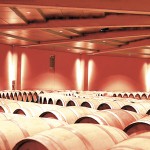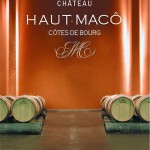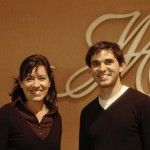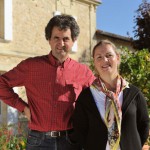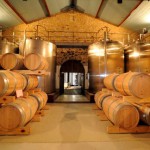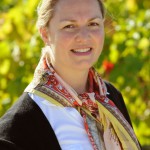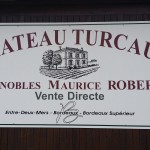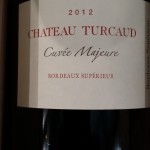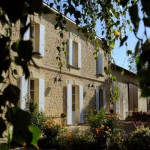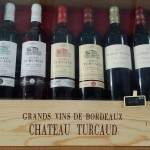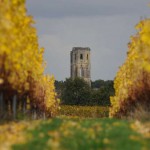The following information and advice is intended for people who, although they may be familiar with the wines of Bordeaux, don’t necessarily know how to go about visiting the region.
The first thing to consider when going to the Bordeaux wine country is its sheer size and complexity. There are some 9,000 châteaux, and the distances between regions can be enormous. It takes nearly 3 hours by car from the northern tip of the Médoc to the far side of Saint-Emilion…
It is almost always preferable to make appointments in advance (and mandatory for the most famous estates), and to be aware of travel time between châteaux. A tour and tasting usually lasts about an hour, sometimes an hour and a half. The better-known châteaux request payment ranging from 8 to 20 euros. Tours are usually available in English at the most famous châteaux, but this should not be automatically assumed when visiting less exalted ones. Generally speaking, visitors sample two wines: the grand vin and the second wine. These should be tasted, but not be swallowed, i.e. you may wish to practice your spitting skills!
It is not done to leave a tip.
Like everywhere else in rural France, life comes to a halt between 12 and 2 for the sacred lunch hour, so a restaurant stop is a good idea. This usually involves a 3 (or more) course menu, and quick snacks may be difficult to find. Pace yourself accordingly for your first afternoon appointment.
Like any wine-producing region, food, of course, plays an important role in Bordeaux. La cuisine bordelaise tends to be simple and wholesome rather than elaborate. For instance, one of the finest dishes is entrecôte (boneless rib steak) grilled over vine cuttings and slathered with a mixture of bone marrow, parsley, and shallot. This is divine with a good red wine! Surprisingly, although the sea is not far, meat is served far more often than fish in Bordeaux. If you like oysters, however, the ones from Arcachon Bay and the nearby Charentes region are well worth discovering. Other classic dishes include foie gras, grilled magret de canard (duck breast), and duck confit. Virtually no cheeses are produced in the Bordeaux Restaurants in Bordeaux, including the wine country, feature varying degrees of wine expertise. The wines are frequently very young and, alas, cost 3 to 4 times the retail price… Many restaurants do not provide decanters. I therefore suggest ordering wines from the lesser regions, and hope that these have been well-selected, or that the waiter knows enough to make a knowledgeable recommendation.
The sweet white wines of Bordeaux are often enjoyed as an aperitif, which runs against the grain for English speakers, who often only see them only as dessert wines. However, many restaurants offer Sauternes by the glass, and this is a golden opportunity to experiment.
Unfortunately, it is difficult to visit the wine country on week-ends, unless by prior appointment. However, many appellations, including the most prestigious ones, have a Portes Ouvertes weekend once a year where up to fifty châteaux welcome the public. You can obtain a schedule of these from the Bordeaux Tourist Office, which also offers guided bus tours (leaving from the city center) to the wine country all year long.
If you are unsure about setting up your own itinerary, finding your way around, or hesitant about drinking and driving, several options are available:
The following professional guides are all native English speakers with an in-depth understanding of Bordeaux:
http://dmjwineworks.com/tours.php
http://www.insidertasting.com/insidertasting/Tours.html
http://www.france-wine-chateaux.com/history.html
The following licensed tour operators are specialized in wine:
http://decantertours.com/
http://www.bordeauxexcellence.com/
http://www.bordeauxsaveurs.com/fr
http://www.bordovino.com/
http://bordeaux-river-cruise.com/8-wine-cruise
Bordeaux is France’s 5th largest city. The city proper has 250,000 inhabitants, and the urban area has more like 850,000. This raises the issue of where to stay. While accommodation in a hotel, chambre d’hôte (guest house) or gîte (short-term rental) in the wine country may be less expensive and provide a bucolic setting, Bordeaux has a couple of major advantages: it is centrally located and not totally dead once the sun sets. In addition, Bordeaux is a tourist attraction in its own right with beautiful 18th century architecture, and was designated a World Heritage Site by UNESCO.
Like many major cities around the world, however, traffic can be a problem, and you should allow for this when making appointments. Meanwhile, the city’s public transportation system is pretty good, and the Bordelais are quite proud of their modern tram.
The best wine shops in the city (L’Intendant, Bordeaux Magnum, and the Vinothèque) are all within a two minute walk of each other, near the Grand Théâtre. As you will see, however, the prices for the greatest wines are no lower than they are abroad…
A rule of thumb is that genuine interaction and the possibility of one-on-one conversations during a château visit are inversely proportional to the château’s reputation. For instance, Mouton-Rothschild receives thousands of visitors a year and has a small army of tour guides. While it is only normal that first time visitors to Bordeaux should wish to go here and the other top estates, please bear in mind that a more meaningful and authentic experience awaits you in the Côtes de Blaye, southern Graves, Lalande-de-Pomerol, etc.
How to make appointments: This is best done months in advance at the top-notch châteaux. Contacting them by e-mail, in English, is fine. They like to know who you are, so a thumb-nail biography and your background with regard to Bordeaux will help (flattery will get you everywhere…).
Obviously, there are times of year when tours are difficult to arrange: the vintage, the month of August, during the en primeur tastings in later March/early April, on weekends and, of course, on French public holidays.
There are numerous wine bars in the city of Bordeaux. Two deserve special mention: the CIVB wine bar, Cours du XXX Juillet, and Max Wine on 14 Cours de l’Intendance where you can taste châteaux up to and including first growths. Restaurants allowing you to bring your own wine are relatively rare, but La Tupina in Bordeaux and the Lion d’Or in Arcins (the Médoc) are well-known for this.
The Maison de la Qualité, located in Beychac-et-Cailhau on the road from Bordeaux to Libourne, is the headquarters of the Bordeaux and Bordeaux Supérieur appellations. They have a small Disneyland-like attraction called Planète Bordeaux. This is of no great interest, but their boutique features an impressive selection and I always come away with a case or two of good affordable or downright cheap wines.
If you are on a tight schedule and only have time to visit one town during your stay, that should be Saint-Emilion. This charming medieval village is a UNESCO World Heritage Site and will even please travelling companions who are not into wine. One advantage of Saint-Emilion is the number of things you can do on foot. And you can go there from Bordeaux by bus or train. The Saint-Emilion Tourist Office will be glad point you towards châteaux to visit.
A trip to Bourg and Blaye is always a treat and there are Maisons du Vin in both towns. There is also a wonderful farmer’s market on Wednesday and Saturday mornings in Blaye, and the Citadel overlooking the broad Gironde Estuary is of considerable interest.
Visiting the Médoc is not really possible without a car unless, of course, you go on a guided tour. The Maison du Vin in Pauillac will be glad to arrange individual visits, including to great growth châteaux, for a modest fee.
Sauternes is one of the most attractive regions, scenically speaking, in Bordeaux. It is also one of the rare ones where you can always visit an estate or two on Sunday. The Tourist Office in Sauternes will provide all necessary information.
But there are a host of other places to discover outside these world-famous appellations: Castillon, the northern Médoc, Fronsac, the southern Graves, etc., etc. My first ever blog posts were on estates in the Entre-Deux-Mers, whose rolling countryside and modestly priced wines are enhanced by the pleasure of going off the beaten track… In fact, the more your learn about Bordeaux, the more you will be tempted to go away from the name wines to find exciting discoveries – at a fraction of the cost.
There are various celebrations and fairs in the wine country, but none is as large or popular as the biennial Bordeaux Wine Festival, held in June in even-numbered years. The Union des Grands Crus organises the Week-end des Grands Crus annually in the month of May. Open to the public, this is a wonderful opportunity to taste some on the finest wines in Bordeaux and meet the winemakers.
I will be glad to answer any specific questions about visiting Bordeaux and the blog may, in the near future, include a forum for others to share their experiences.
